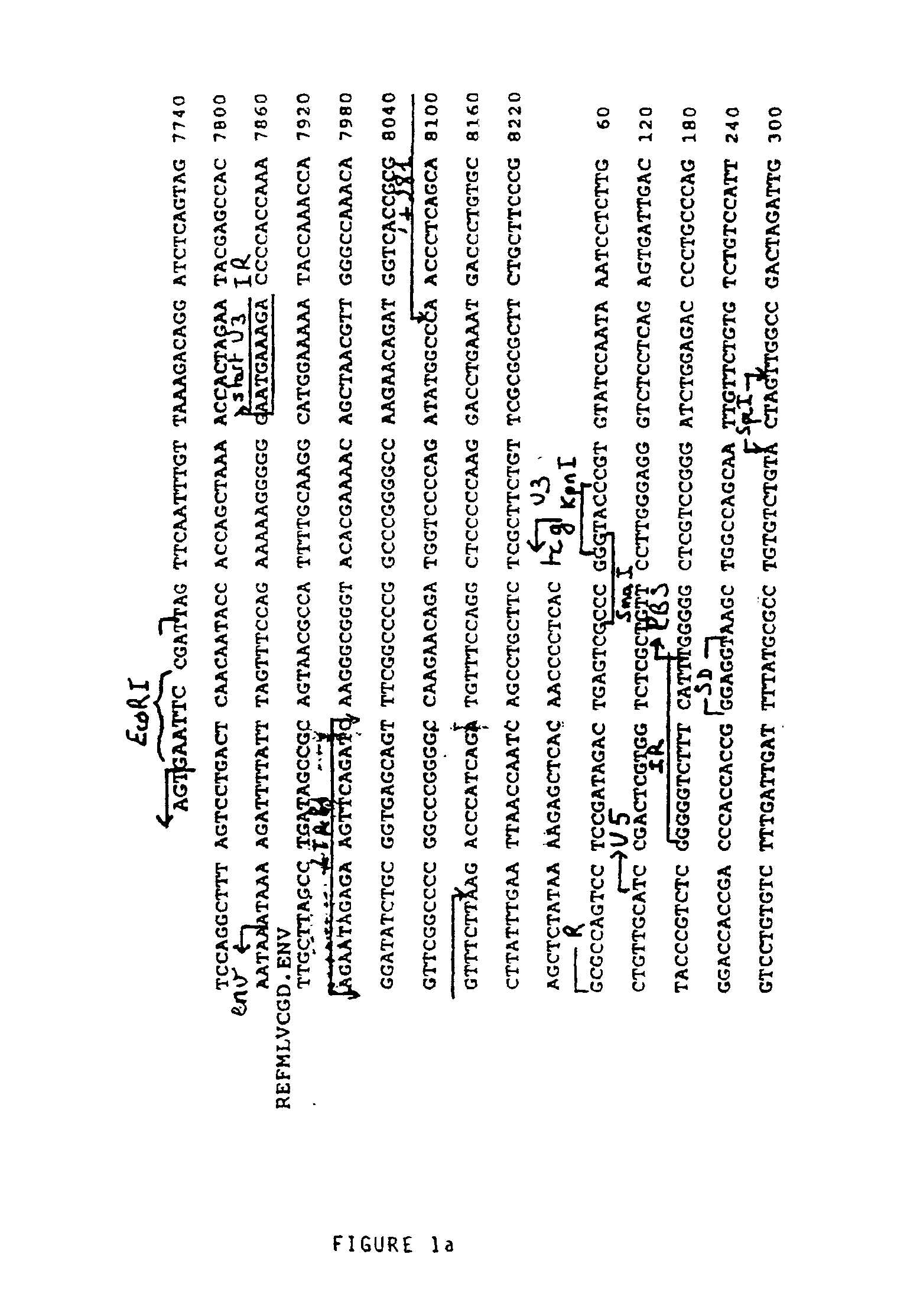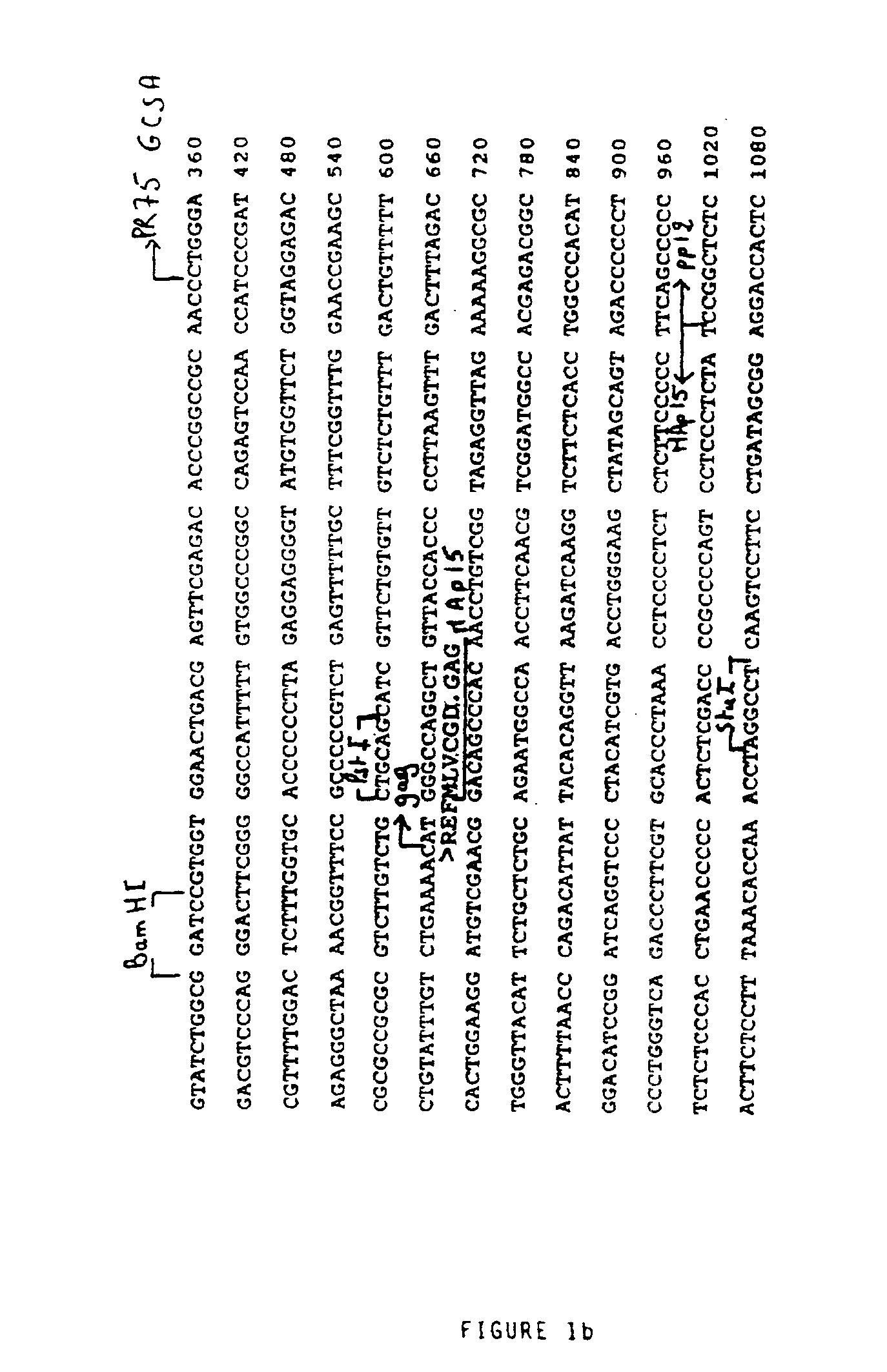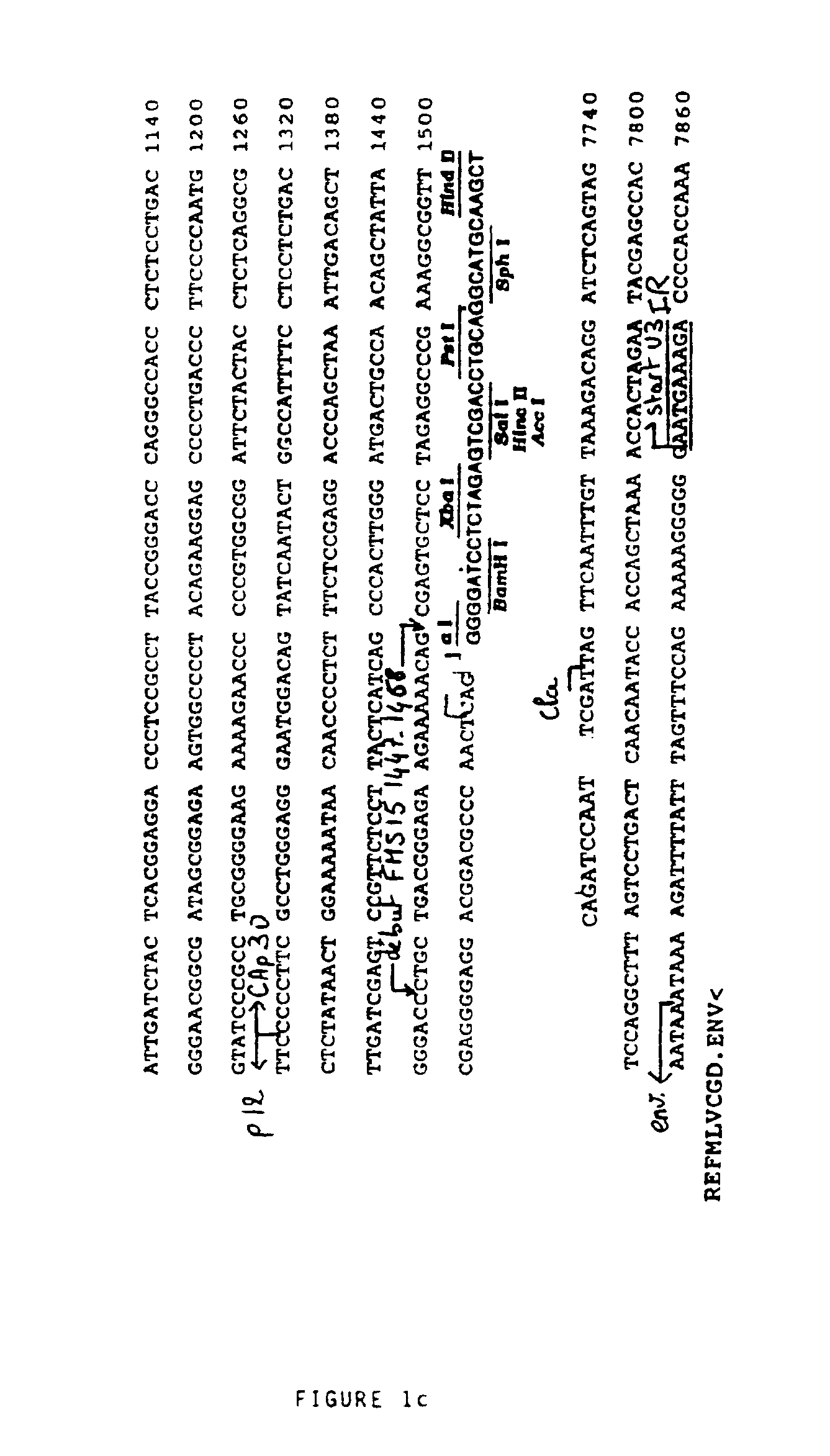Retroviral vector for the transfer and expression of genes for therapeutic purposes in eukaryotic cells
a technology of eukaryotic cells and retroviral vectors, applied in the direction of biocide, genetic material ingredients, animal repellents, etc., can solve the problems of insufficient the inability to meet the needs of technological difficulties, and the quantitative abnormality of synthesis, so as to improve the infectivity of viruses used, increase the packaging efficiency, and stabilize the vector obtained
- Summary
- Abstract
- Description
- Claims
- Application Information
AI Technical Summary
Benefits of technology
Problems solved by technology
Method used
Image
Examples
examples
[0106]A) Preparation of the Retroviral Vector
[0107]Materials and Methods
[0108]1—Source of the Viral Genomic Material
[0109]The genomic DNA of the provirus was cloned in pBR322 (Sitbon et al., 1986). After replacement of the ClaI site at 7702 of the viral sequence by a EcoRI site, the EcoRI-PvuII fragment of 2110 base pairs (bp) containing all of the viral Long Terminal Repeat (LTR) was subcloned at the EcoRI and SmaI sites of the polylinker of pUC19.
[0110]2—Construction of the Retroviral Vector FOCH29
[0111]The HindIII site of the polylinker of pUC19 containing the EcoRI-PvuII fragment was replaced by a BglII site, after opening by HindIII, filling in with the long fragment of E. coli DNA polymerase (Klenow fragment) and ligation with a BglII adaptor not recreating the HindIII site; the BglII site was introduced to receive a BamHI-BamHI fragment of 865 bp containing a second copy of the native LTR of the Friend virus destined to constitute the downstream LTR (or 3′ LTR). This BamHI-Ba...
PUM
| Property | Measurement | Unit |
|---|---|---|
| Therapeutic | aaaaa | aaaaa |
Abstract
Description
Claims
Application Information
 Login to view more
Login to view more - R&D Engineer
- R&D Manager
- IP Professional
- Industry Leading Data Capabilities
- Powerful AI technology
- Patent DNA Extraction
Browse by: Latest US Patents, China's latest patents, Technical Efficacy Thesaurus, Application Domain, Technology Topic.
© 2024 PatSnap. All rights reserved.Legal|Privacy policy|Modern Slavery Act Transparency Statement|Sitemap



